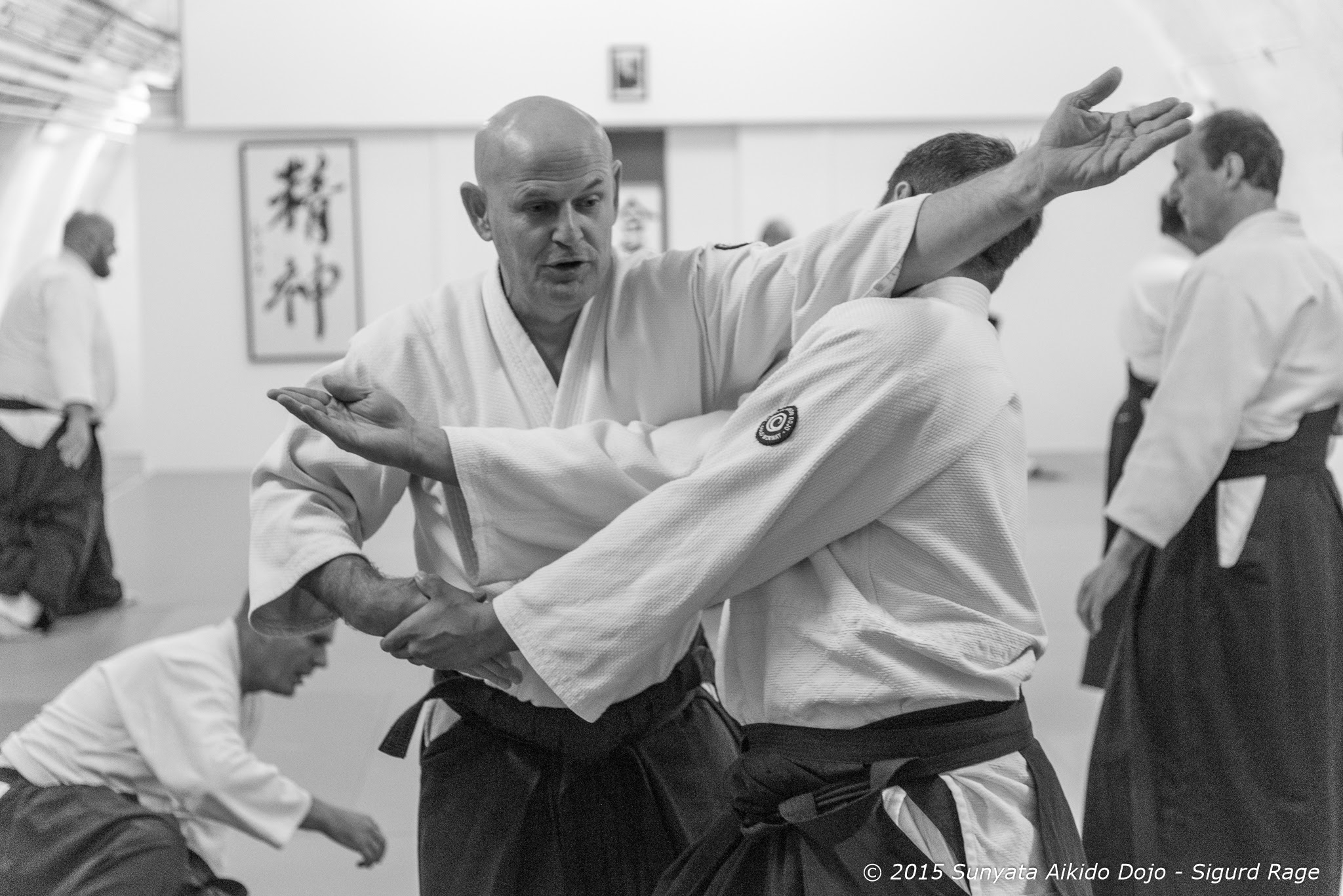Grading
Grading, that’s the way we show our skill. At Sunyata Aikido Dojo, we want all members to follow our grading system, that is our backbone. This should be achievable for anyone who uses conscious training time with Aikido training.
On grading the practitioner performs and shows that he/she master his/hers current syllabus that was trained on with the correct training time period from the last test. An athlete can get random samples from a previous syllabus. You can manage this with good preparation and regular training.
In the preparation for grading on normal training, you often train with practitioners with different levels, some have trained much longer and have more experience than you have. Some have a higher degree and some have trained less, no degree or lower degree.
It is important to adapt as a partner/practitioner so that everyone gets a lot out of the training. Advanced and less advanced athletes have as a starting point to support a less trained athlete so that beginners, advanced athletes can train with “everyone” on the mat. If this works well, everyone has a partner to train with who is constantly moving forward regarding the training skills also in the future.
In regular training, we spend about 20 minutes on each training on grading preparation techniques, i.e. everyone trains their curriculum with a partner, sometimes at a different level, with right or lower graded athletes. This is to give the opportunity to perform a good grading and get ahead in the process and gain more experience. With repetition of grading techniques, over and over again, a practitioner becomes good, and someone who is open to improvement input and the skill increases. This is also reflected in the skill level of the club, the Dojo. Here, too, even training is a big factor.
It is not possible to perform a good grading without preparation. You often show your level with others at the same level. At Dan Grades, we refer to Hiroaki Kobayashi sensei and our organization’s grading committee.
We therefore train especially towards grading goals or skill goals. See grading form. Showing off everything is very much, therefore there are sub-goals, Kyu degrees, and different levels of Dan degrees. Dan graduates should also have an understanding in general about Aikido training in Norway and internationally, that there are different “styles” of ways to train Aikido, preferably tried on it. Experience is better than no experience.
We want our members to have a good opportunity to achieve the goals and ensure the quality of our skill. A black belt should mean that you have approximately the knowledge and skills that the degree requires and also stand up internationally. This presupposes that you come to training regularly, maintain your skills and continue your studies towards the next goal. Dan degrees it is also important that, go out of the Dojo and attend seminars, try on other teachers with an open mind, It gives a more experience and understanding that it is not just a way to do the way.
It is the same with a craft, you have to show your work and get passed or failed.
Our Main sensei, Kobayashi Sho Shihan used earlier on higher Dan tests when the practitioner knew the particular techniques on form well. “Show me variations” There are those who have trained a lot and have experience. There are those who are upcoming instructor material to take skills further! It’s not just a way to do it!
In Aikido we do not compete! We show the skill. On grading, techniques are shown clearly and distinctly. Of course, the pace can vary, always make sure that no one is injured during the test. There is a clear control and situational awareness.
Our instructors train themselves! They travel to many seminars here in Norway and internationally. They are active. They know the syllabus in and out, they practice it and fine-tune their skill. It is also one of the reasons why we invite instructors, for the opportunity to specialize and make ties to other Dojos. Most Dojos today are part of a network of Dojos so opportunities are there.
Mouliko Halén, Dojo cho.

